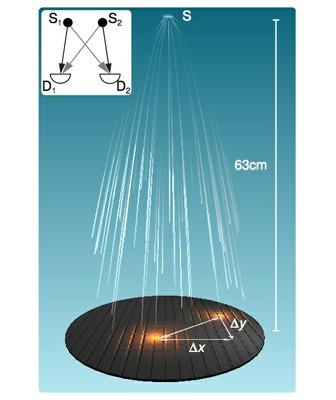-

- he detector
In the 1950's Robert Hanbury Brown suggested that correlations in the collected by two spatially separated telescopes could lead to measurements of stellar diameters. The idea was met with skepticism in some quarters, in part because it is not at all obvious how independent photons, emitted by well separated points on a star, could show correlations in detectors on earth. The quest for a good explanation gave birth to the modern field of quantum optics and variants of the "Hanbury Brown Twiss effect" have also been used in areas ranging high energy physics to the cosmetics industry. The effect has also been studied using cold atoms and I will use that example to illustrate some of these ideas and comment on some of its extensions.

